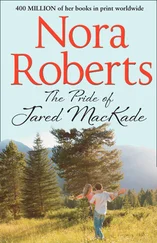Jared Diamond - The World Until Yesterday
Здесь есть возможность читать онлайн «Jared Diamond - The World Until Yesterday» весь текст электронной книги совершенно бесплатно (целиком полную версию без сокращений). В некоторых случаях можно слушать аудио, скачать через торрент в формате fb2 и присутствует краткое содержание. Город: New York, Год выпуска: 2012, ISBN: 2012, Издательство: Viking, Жанр: Культурология, История, на английском языке. Описание произведения, (предисловие) а так же отзывы посетителей доступны на портале библиотеки ЛибКат.
- Название:The World Until Yesterday
- Автор:
- Издательство:Viking
- Жанр:
- Год:2012
- Город:New York
- ISBN:978-1-101-60600-1
- Рейтинг книги:3 / 5. Голосов: 1
-
Избранное:Добавить в избранное
- Отзывы:
-
Ваша оценка:
- 60
- 1
- 2
- 3
- 4
- 5
The World Until Yesterday: краткое содержание, описание и аннотация
Предлагаем к чтению аннотацию, описание, краткое содержание или предисловие (зависит от того, что написал сам автор книги «The World Until Yesterday»). Если вы не нашли необходимую информацию о книге — напишите в комментариях, мы постараемся отыскать её.
The World Until Yesterday This is Jared Diamond’s most personal book to date, as he draws extensively from his decades of field work in the Pacific islands, as well as evidence from Inuit, Amazonian Indians, Kalahari San people, and others. Diamond doesn’t romanticize traditional societies—after all, we are shocked by some of their practices—but he finds that their solutions to universal human problems such as child rearing, elder care, dispute resolution, risk, and physical fitness have much to teach us. A characteristically provocative, enlightening, and entertaining book,
will be essential and delightful reading.
Contain tables! Best viewed with CoolReader.
The World Until Yesterday — читать онлайн бесплатно полную книгу (весь текст) целиком
Ниже представлен текст книги, разбитый по страницам. Система сохранения места последней прочитанной страницы, позволяет с удобством читать онлайн бесплатно книгу «The World Until Yesterday», без необходимости каждый раз заново искать на чём Вы остановились. Поставьте закладку, и сможете в любой момент перейти на страницу, на которой закончили чтение.
Интервал:
Закладка:
Wahl, Joachim, 134
Wanigela people, 411, 439 table
Waorani Indians, 139, 163
warfare, 119–70
absence of, 155–56
definitions of, 129–31
genetic basis for, 155–57
hand-to-hand fighting in, 142–43
religion and, 356–57, 359–61, 366, 367 fig. , 368
trade and, 74, 75, 164–66, 287
warlike animals, 154–55
See also state warfare; traditional warfare
wasps, 282
water-witching, 342, 350–51, plate 46
wealth. See affluence
weaning and birth intervals, 179–81
weapons, 18
accidental wounds, 281
state warfare, 142–43, 144
trade in, 68–69 table , 69, 70, 71, 73–74
traditional warfare, 121, 135, 150, 151
weather
food availability and, 301, 302–3, 308
weather hazards, 280–81
Weber, Max, 224
WEIRD societies, 8–9
advantages, 455–57, 461–62
child development scholarship, 174–75
child-rearing practices, 180, 182–83, 184–85, 187, 189, 190–91, plate 39
defined, 6
environmental hazards in, 276–77, 279
friendship in, 51–52
individualism in, 91, 224
life expectancies, 231, 233
shortcomings of, 457–61
social bonds in, 51–52, 88, 91, 456–58
stranger contacts in, 1–2, 53
trade in, 61–65
See also specific countries
Welsh language, 409
Westernized lifestyle adoption
health and, 4, 31–32, 411–14, 432–33, 449–50
for safety and comfort, 280
See also diabetes; hypertension
Westernized societies. See WEIRD societies
widow strangling, 21, 216
widowhood, 233
Wiessner, Polly, 479
Wilson, David Sloan, 363–66
Wilson, Michael, 139
Witoto Indians, 214
Wollaston, A. F. R., 298
wolves, 154–55
women, 177, 233, 290, 298
as foragers, 187, 278
as information sources, 166–67, 291
treatment of old women, 215, 216
war and, 141, 146, 157–58, 163, 166–67
See also children
work and work ethic, 224, 353, 460
World Trade Center attack, 127, 128
World War I, 102, 127, 139–40, 142, 160–61, 361
World War II, 137, 165, 169–70, 361, 407
atomic bomb, 127, plate 37
food shortages, 314
mortality, 127, 128, 139–42
personal stories of, 238
related conflicts, 102, 130
Wrangham, Richard, 139, 155
writing, 3, 7, 18
Xingu Indians, 73–74, 419
Yahi Indians, 398
Ishi, 398, 456, plate 29
Yakut people, 215
Yamana language, 397
Yanomamo Indians, 16, 42, 203, 280, 297–98, plate 12
food availability, 301, 303
map, 27 fig.
salt intake and blood pressure, 416, 418–19
trade, 65, 67, 73, 74, 75
warfare, 132, 137, 158, 160, 163, 165, 291
Yap Islanders, 62
Yazzie, Robert, 103
Yemenite Jews, 433, 438 table , 449
Yolngu people, 26 fig. , 42, 44, 68 table
Yora Indians, 188
youth, American cult of, 225–26
Yupik Inuit, 152
Yupik languages, 397, 398
Zimmet, Paul, 443
Zulu people, 137, 148, 201
Zweig, Stefan, 239
Illustration Credits
Plate 1: Carlo Ottaviano Casana; Plate 2: © Marka/SuperStock; Plate 3: Jacob Maentz/ www.jacobimages.com; Plate 4: Olivier Blaise; Plate 5: Brian M. Wood; Plate 6: Romas Vysniauskas; Plate 7: Henrik Stabell; Plate 8: Bonnie Hewlett; Plate 9: © 2012 Jeff Schultz/AlaskaStock.com; Plate 10: Kim Hill; Plate 11: Toninho Muricy; Plate 12: © Art Wolfe/ www.artwolfe.com; Plate 13: Photograph by Michael Clark Rockefeller. Courtesy of the Peabody Museum of Archaeology and Ethnology, Harvard University, 2006.12.178.10.; Plate 14: James Tourtellotte, U.S. Customs & Border Patrol; Plate 15: © Eye Ubiquitous/SuperStock; Plate 16: J. Miles Cary, Knoxville News Sentinel ; Plate 17: Afonso Santos; Plate 18: Photo by Carole A. Kosakowski; Plate 19: Russell D. Greaves and Karen Kramer; Plate 20: Bonnie Hewlett; Plate 21: Brian M. Wood; Plate 22: Karen Kramer; Plate 23: Sun xinming/ImagineChina; Plate 24: Sheryl Dawson/Spot-On Marketing, courtesy of Starfish Resources, LLC.; Plate 25: Sisse Brimberg/National Geographic Stock; Plate 26: Bruno Zanzottera/Parallelozero; Plate 27: PunchStock; Plate 28: Stadtgeschichtliches Museum Leipzig; Plate 29: Courtesy of the Phoebe A. Hearst Museum of Anthropology and the Regents of the University of California. (Catalogue No. 15-5910.); Plate 30: Photo by Michael Leahy, from First Contact by Bob Connolly and Robin Anderson (Viking, New York, 1987) courtesy of the estate of Mrs. Jeannette Leahy; Plate 31: Photo by Michael Leahy, from First Contact by Bob Connolly and Robin Anderson (Viking, New York, 1987) courtesy of the estate of Mrs. Jeannette Leahy; Plate 32: Peter Hallinan; Plate 33: Blend Images/PunchStock; Plate 34: REUTERS/Yuri Maltsev; Plate 35: AP Photo/George Nikitin; Plate 36: Photograph by Karl G. Heider. Courtesy of the Peabody Museum of Archaeology and Ethnology, Harvard University. 2006.17.1.89.2; Plate 37: Taken by Masami Oki. “Material provided by Hidetsugu Aihara,” donated by Peace Museum of Saitama. Courtesy of Hiroshima Peace Memorial Museum; Plate 38: Russel D. Greaves and Karen Kramer; Plate 39: Phil Ramey, Ramey Pix; Plate 40: © SuperStock; Plate 41: The Harvard Theatre Collection, Harvard University; Plate 42: USAID; Plate 43: Dr. James Garza; Plate 44: REUTERS/Kyodo News Agency; Plate 45: © Sarah M. J. Welch/ The Harvard Crimson ; Plate 46: Robert R. Leahey, State Archives of Florida, Florida memory, http://floridamemory.com/items/show/109768; Plate 47: AP Photo/Don Adams.
Illustrations
ALSO BY JARED DIAMOND
Интервал:
Закладка:
Похожие книги на «The World Until Yesterday»
Представляем Вашему вниманию похожие книги на «The World Until Yesterday» списком для выбора. Мы отобрали схожую по названию и смыслу литературу в надежде предоставить читателям больше вариантов отыскать новые, интересные, ещё непрочитанные произведения.
Обсуждение, отзывы о книге «The World Until Yesterday» и просто собственные мнения читателей. Оставьте ваши комментарии, напишите, что Вы думаете о произведении, его смысле или главных героях. Укажите что конкретно понравилось, а что нет, и почему Вы так считаете.










